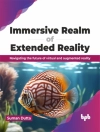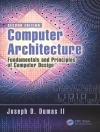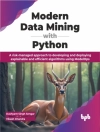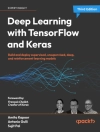Relational databases hold data, right? They do indeed, but to think of a database as nothing more than a container for data is to miss out on the profound power that underlies relational technology. A far more powerful way of thinking lies in relational technologys foundation in the mathematical disciplines of logic and set theory.
Databases contain truths or propositions describing some area of interest such as a business. Those truths are organized into sets. Operations from logic and set theory can be applied to existing sets of truths to derive new sets of truths. Applied Mathematics for Database Professionals introduces you to this way of thinking, to the logic and set theory that underlies relational database technology. All this may sound abstract now, but there are profound benefits from the deeper understanding youll gain from this book.
The math that you’ll learn in this book will put you above the level of understanding of most database professionalstoday. You’ll better understand the technology and be able to apply it more effectively. You’ll avoid data anomalies like redundancy and inconsistency. Understanding whats in this book will take your mastery of relational technology to heights you may not have thought possible.
This book is reviewed and endorsed by C. J. Date and features a foreword by the same.
İçerik tablosu
The Mathematics.- Logic: Introduction.- Set Theory: Introduction.- Some More Logic.- Relations and Functions.- The Application.- Tables and Database States.- Tuple, Table, and Database Predicates.- Specifying Database Designs.- Specifying State Transition Constraints.- Data Retrieval.- Data Manipulation.- The Implementation.- Implementing Database Designs in Oracle.- Summary and Conclusions.
Yazar hakkında
Lex de Haan studied applied mathematics at the University of Technology in Delft, the Netherlands. His experience with Oracle goes back to the mid-1980s, version 4. He worked for Oracle Corporation from 1990 to 2004 in various education-related roles, ending up in Server Technologies (product development) as senior curriculum manager for the advanced database administration curriculum. In that role, he was involved in the development of Oracle9i and Oracle Database 10g. In March 2004, he decided to go independent and founded Natural Join B.V. (http://www.naturaljoin.nl). From 1999 until his passing in 2006, he was involved in the ISO SQL language standardization process, as a member of the Dutch national body. He was also one of the founding members of the Oak Table network (http://www.oaktable.net).












